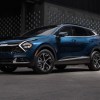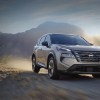
J.D. Power’s Newest Study Proves New Cars Are More Reliable Than Ever
Editor’s note: This article was updated on 6/9/2023.
As time progresses, cars, SUVs, and trucks become safer and more reliable every year. That might sound like hyperbole, but it isn’t, according to the latest J.D. Power 2021 U.S. Vehicle Dependability Study (VDS). Lexus made it to the top of the list for car reliability this year with some of its sedans and sport utility vehicles. This score was 81, the lowest out of all other participating brands in the study.
All car reliability areas showed improvement this year
According to Business Insider, the areas tested in the 2021 VDS cover 177 different problems over eight categories. These categories are: “audio/communication/entertainment/navigation (ACEN); engine/transmission; exterior; interior; features/controls/displays (FCD); driving experience; heating, ventilation, and air conditioning; and seats.”
The 2018-year automobiles included in this study were first examined in the U.S. Initial Quality Study (IQS). The IQS ensured that the cars tested had improved for the fourth year. Many vehicles tested in the IQS were also ranked at the top of the VDS.
“Today’s three-year-old vehicles are of higher quality and more dependable than in previous years,” Dave Sargent, vice president of global automotive at J.D. Power, noted. He also said that cars don’t fall apart or deteriorate at such a fast pace. Ideally, this means cars would last longer and be safer for extended periods. Vehicles could be fixed instead of being totaled in an accident. That would undoubtedly make cars more reliable.
Car reliability has been steadily on the rise
According to the scores, newer cars are inherently more reliable than old cars. Of course, that doesn’t automatically make new cars better, but it makes the driving experience better. Kia, in particular, was most improved.
Based on the score criteria from J.D. Power, Kia improved by over 30 points from the 2020 dependability study. The Kia Optima, Kia Sorento, and Kia Sportage even received four awards for Hyundai Motor Group. These cars were not mentioned in the previous year.
In addition to that, the best score this year for a brand was 81 problems per 100 vehicles (PP100). For 2020, the lowest score was 89 PP100. That shows a slight improvement in problems per vehicle. Still, it is essential to remember that older cars being better than new cars is entirely subjective.
Technology is still a headache for many car owners
The audio/communication/entertainment/navigation area still gives owners the biggest headache. The improvements are slower as we move away from actual buttons and into touch-screen technology. Sargent commented that if a driver cannot count on a system like this to work, it is considered “a lack of dependability.”
An example would be using navigation when one of the touch buttons doesn’t work. Similarly, using a voice-controlled feature that constantly misunderstands the user would make it seem unreliable.
Many drivers are still fond of older cars. Classic cars offered a sense of simplicity and were often easy to work on once you learned one. Most older cars didn’t provide helpful features like anti-lock breaks or traction control, but such vehicles offered a more “hands-on” driving experience.
Technology or not, cars do seem to be more reliable than they were a decade ago. Many classic automobiles are available for the more analog experience and then hop into your Tesla for days you don’t feel like doing much—the best of both worlds.



